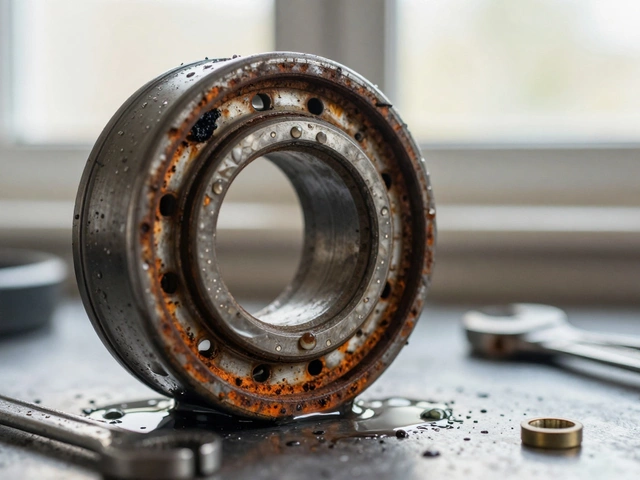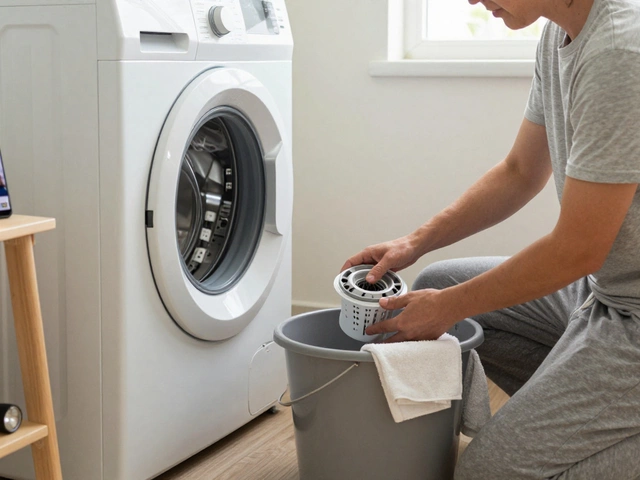Most people ignore it until something goes wrong—a fogged-up bathroom mirror, yellowed paint peeling off the wall, or a kitchen that always smells like last night’s curry. But what if I told you that not using your extractor fan is quietly causing more problems than you realize? You might think you’re saving on electricity or simply forgetting to flip the switch, but the tiny fan in your ceiling or on your wall is doing more than clearing the air. Here’s what’s really going on behind those closed windows and steamy rooms, and why reaching for that extractor switch might become your new favorite habit.
How an Extractor Fan Actually Works (And Why You Need One)
First off, let’s get clear on what an extractor fan does. It’s not just for moving warm air around or clearing out a bit of smoke when dinner goes sideways. Extractor fans are designed to pull moisture, odors, and airborne particles out of your home and send them outside. This is especially important in rooms that get damp or steamy—think bathrooms, kitchens, and sometimes laundry rooms.
Without this steady airflow, all that moisture from hot showers or boiling pasta just lingers. Now, air holds a surprising amount of water vapor, and once the temperature drops, that vapor doesn’t just disappear. It turns into droplets—yes, the same condensation that steams your mirror or drips down your kitchen tiles. An extractor fan speeds up the venting of this moisture, stopping it before your walls sponge it all up.
Fans also kick out grease particles, especially over a stove. Those greasy, invisible droplets rise with the steam and, without ventilation, settle everywhere—on cupboards, ceilings, and light fixtures. If you ever wiped a kitchen surface to find it sticky even after you cleaned, you know the struggle.
Of course, there are varying designs. Some fans push air through a wall directly to the outdoors, and others connect to venting ducts. Modern bathroom fans even include humidity sensors, turning on automatically when things get too steamy. Whatever the setup, using the fan is your best bet against lingering moisture and muck.
The Hidden Dangers: Mould, Damp, and Structural Damage
Forget the minor annoyance of wet windows for a second. The real issue is what you can’t see right away. Skip using the extractor, and you’re setting up the perfect breeding ground for mould and mildew. Mould needs two things: moisture and a surface to live on. It thrives in steamy, warm spots, settling into grout lines, window sills, and even the wallpaper you spent ages picking.
Research from Public Health England has linked exposure to household mould with increased risk of respiratory illnesses—think asthma attacks, allergic reactions, and sometimes serious lung infections. Black mould (what scientists call Stachybotrys chartarum) is especially bad news. You won’t always see it creeping at first, but you might start to notice a musty odor or persistent coughing that gets worse indoors.
Dampness is not just a health issue. It actively wears down the fabric of your home. When water vapor soaks into plaster, wallpaper starts peeling and paint bubbles up or peels away. Even worse, prolonged damp can rot wooden frames, window sills, and doors. If you have insulation in your walls, trapped moisture can seriously reduce its effectiveness. Your energy bills go up as the house feels chilly, even when the heating’s on high.
Here’s a fun fact: according to the BRE (Building Research Establishment), poor ventilation is a top reason rental properties fall below healthy home standards. Landlords can actually be held legally responsible for not providing (or maintaining) extraction in wet rooms. It’s not just about comfort, it’s about the law, too.

Common Myths About Extractor Fans—And Why They’re Costing You
Now, a lot of folks think, "Cracking a window is just as good as using the extractor, right?" Not quite. On a still day, that open window might barely move any air out of the room, and during winter, nobody wants a freezing draft. An extractor fan creates the airflow needed to actually pull damp, greasy air right out, without you having to shiver while you shower.
Others think running the fan all the time is a waste of energy. Modern extractor fans are incredibly efficient—many use less than 10 watts, which is less than your average LED light bulb. That’s pennies per day, versus hundreds of pounds in damp repairs. There’s also the idea that keeping the door open while bathing will “share the steam” with the rest of the house. If you’re not using any extraction, you’re simply spreading the problem, not solving it. Moisture doesn’t just disappear; it finds somewhere else to cause trouble.
Want to know a sneaky trick? If your bathroom mirror fogs up even after a few minutes in the shower, your extractor isn’t doing its job—or you’re not giving it enough time to work. Professionals suggest leaving the fan on for at least 15 minutes after a bath or shower. That lets it strip out lingering damp air. Some even wire fans with a timer or humidity sensor, so you don’t have to remember to switch it off.
Easy Fixes and Smart Habits to Maximize Your Extractor Fan’s Benefits
Okay, so you see the value. What can you actually do to keep your indoor air clean and your home safe? First, get familiar with your fan. If it’s clogged up with dust or grease, it won’t move air very well. Pop off the cover once a month and either vacuum or wash it. This goes double if you fry food often or live with a lot of pets—pet hair and kitchen grease clog things fast.
If the fan seems noisy or weak, it might be time to check the venting duct. Sometimes, birds build nests outside the duct grill, or debris settles in over time. A quick glance (or a call to a qualified repair tech, if you’re squeamish) can make a world of difference. If you notice water dripping from the fan housing, the duct might not be insulated, causing condensation; this should get fixed before it leads to bigger headaches.
Got a window near the fan? Keep it closed while the fan is running. Sounds odd, but if there's an easy way for air to come in, the fan will pull in fresh air instead of the moist stuff that needs to be vented out. After your shower or cooking session, leave the fan running for 10-20 minutes. Some fans even have a run-on timer—if yours doesn’t, it’s a cheap upgrade if you like forgetting the switch.
Finally, if you’re renovating or moving into a new place, ask about the type of extraction system in place. Not all “vents” are created equal; some simply recirculate air instead of sending it outside. Extractor fans that vent to the outdoors do the best job at controlling moisture and pollutants. Some high-performance fans even have built-in filters, pulling out toxins, pollen, and even some viruses from the air. Good air isn't a luxury—it's the baseline for a healthy home.
Don’t let the little fan on your wall become an afterthought. That small habit—flipping the switch before your shower or while you cook—avoids bigger (and more expensive) problems down the road. Take care of your extractor fan, and your home will take care of you.





